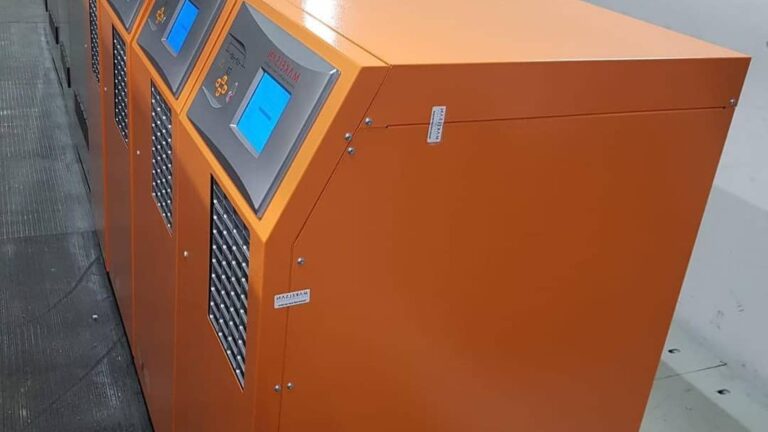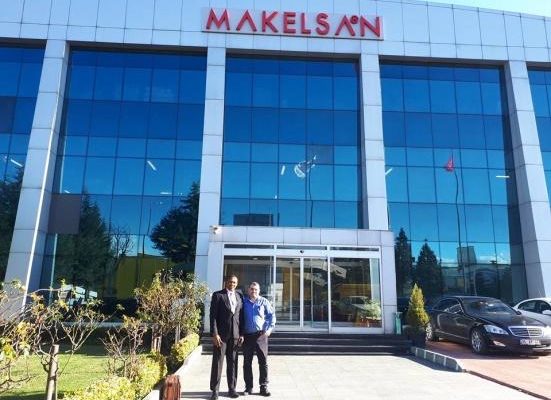Many of us who deal with emergency backup power are often asked to manage a number of complicated systems that require specific attention to parts, efficiency and power quality. It’s a lot to deal with, and it always helps to have some guidance on the basics of these systems. Here is an overview for understanding UPS systems:
1.) Not all UPS systems are created equal.
To truly understand UPS systems, it’s important to familiarize yourself with the types of UPS units and how they work.
STANDBY UPS
This is a break/fix type of UPS. This system typically consists of a battery to provide a short-term source of electrical power, a rectifier or charger to maintain a battery voltage, an inverter to provide power to load during normal operations, and a static switch to transfer load automatically between utility and the inverter with minimal disturbance. It also may have input and output isolation transformers and filters to provide the appropriate isolation and disturbance attenuation. They also contain control circuits, sensors and monitors. This UPS system converts AC to DC power that is compatible with the battery’s voltage and characteristics.
DOUBLE CONVERSION UPS
This type of UPS is different than a standby or line interactive UPS in several areas. First, the primary power path is the inverter versus the AC mains. In this system, failure of the input AC DOESN’T cause activation of the transfer switch, because the input AC is the backup source. This type of system works by converting power from AC to DC power and then back to AC. It protects your facility at the highest level as it isolates your equipment from raw utility power. Since the unit is always online, it provides power with zero transfer time to your equipment, so it is ideal for facilities with mission-critical equipment, or in locations that have poor power conditions. It also has an internal static bypass, so that if your UPS has a major failure, you can keep your critical loads online during a repair or replacement.
LINE INTERACTIVE UPS
This type of UPS monitors incoming voltage from the utility and provides automatic voltage regulation when low or high voltage conditions occur. A line-interactive UPS preserves battery life, as it may not need to constantly switch to battery mode in places prone to brownouts on the grid. Line-Interactive units also provide protection from power spikes and surges. They also provide Radio Frequency Interference (RFI) and Electromagnetic Interference (EMI) filtering. This UPS is ideal for applications where you are not protecting mission-critical equipment and the utility power is fairly clean. These UPS units are typically inexpensive, even for a smaller office.
2) UPS total life cycle costs are different depending on what you purchase, and how the UPS is used.
A number of things can affect UPS’s total cost of ownership. Total life cycles can be affected by:
- Energy inefficiency is one of the largest controllable costs in a UPS. A new UPS system can vary in efficiency from 85% to 98% in true, online mode. However, UPS systems, particularly when underutilized, can be enormous energy hogs, with as low as 40-50% efficiency in some legacy systems. At QPS, we can help you estimate your total cost of ownership, including the cost of wasted energy over the life of your system.
- Dust, debris, and moisture will sap overall efficiency. Electrical disruptions can also cause issues if not properly assessed.
- Irregular maintenance or poorly designed systems. Not performing scheduled preventative maintenance will shorten your UPS life cycle significantly. It also inflates costs by needing more frequent parts replacement. Poorly designed systems have the same results.
- Some systems may come standard with a 3-year warranty, rather than a 1 year. Extending your initial warranty can often help lower your overall cost of ownership.
3) Your UPS is protecting against more than power loss.
You are also conditioning your power and protecting your equipment.
Why is power conditioning important? Because power anomalies from the utility can diminish performance! Power conditioning acts as a buffer to interference and smooths out potential power fluctuations before passing it to your location. It is important to note that only a true online, double-conversion UPS will protect against all nine power anomalies.
THERE ARE NINE COMMON POWER PROBLEMS THAT POWER CONDITIONING PROTECTS AGAINST:
- Power Failure: Total loss of utility power.
- Power sag: Short-term low-voltage issues. This is similar to a person being sleepy after lunchtime.
- Power Surges or Spikes: Short-term high voltage that’s more than 110% of normal output. This is similar to a caffeine high in a person.
- Under-voltage (brownout conditions): Reduced line voltage for an extended period. This can be a few minutes to a few days. This commonly happens during summer months when air conditioners put a strain on the power grid.
- Over-voltage: Increased line voltage for an extended period from a few minutes to a few days.
- Electrical line noise: A high power frequency wave caused by RFI or EMI.
- Frequency Variation: A loss of stability in the power supply’s normal frequency of 50 to 60 Hz.
- Switching Transient: Instant under-voltage in the range of nanoseconds.
- Harmonic Distortion: Distortion of a normal power wave, typically transmitted by unequal loads.
4) UPS systems need regular maintenance during their life cycle!
You need to pay attention to both the life cycle of your equipment AND its parts. Here are common life cycles:
STATIC UPS SYSTEMS:
The average lifespans for three-phase UPS systems are roughly 15 years. Many systems need semi-annual or annual maintenance. Note that battery replacements for VRLA batteries included in this system have their own life spans and add to the total maintenance cost! There are normally three regular battery replacements in a static UPS system, done in year 4, year 8, and year 12. Replacement of UPS parts may also be affected by the load on the system and its reliability.
FLYWHEEL UPS SYSTEM:

RBQ UPS System
The life cycle for this type of system is typically around 20 years. Maintenance for this type of system is typically annual, IF the system contains no batteries. If the system DOES contain batteries, you must factor in the life cycle of battery replacement as a component of this system. The bearings on a flywheel UPS system may also need to be replaced every 5 to 8 years. This type of replacement requires specialized equipment and prolonged downtime for the replacement, which can be very expensive.
There is a lot to consider when making decisions about a UPS system regarding the four factors we discussed, but understanding UPS systems don’t have to be rocket science. Our experts at QPS can help in understanding the nuances of these systems in relation to your environment.








